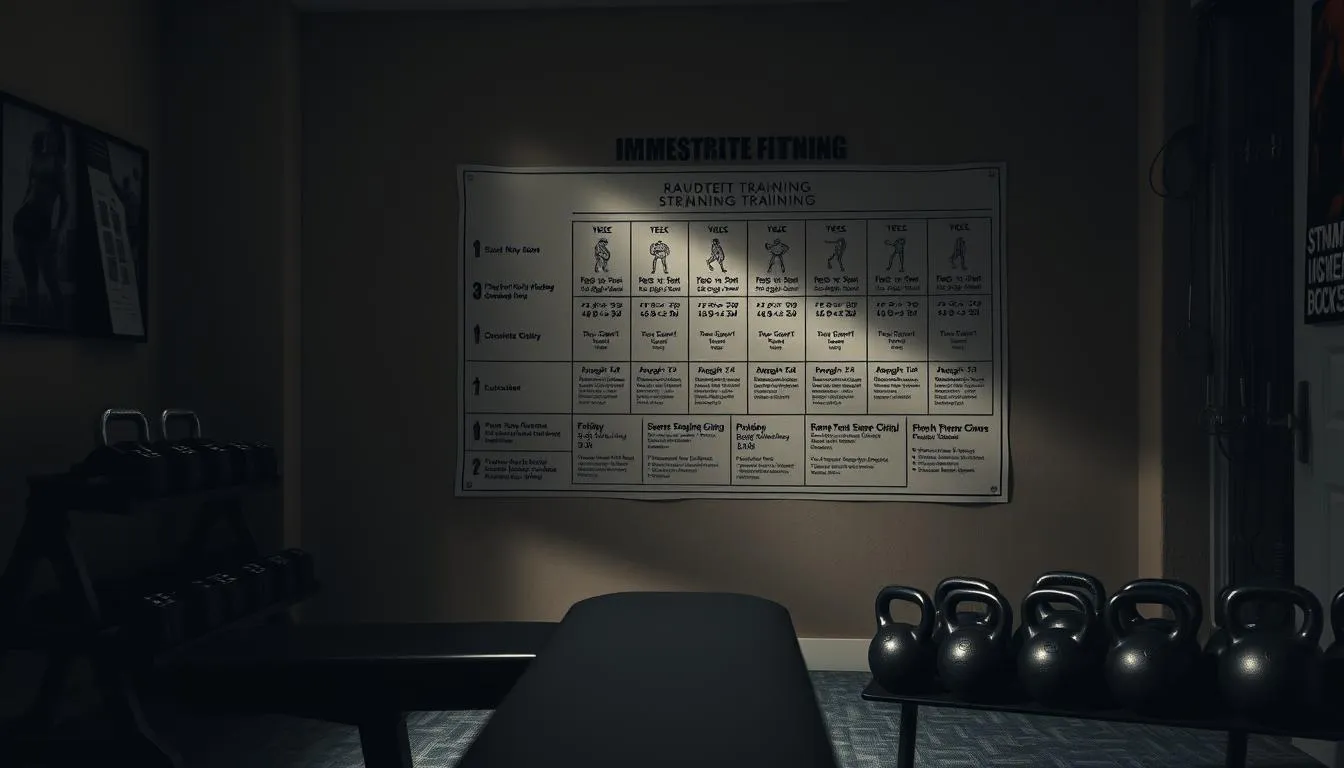Surprising fact: just one short burst of activity can raise blood flow and send more patrol cells into circulation for up to three hours after you stop moving.
Exercise raises heart rate, moves lymph through muscle contractions, and helps immune cells travel from lymph nodes and the spleen into the bloodstream. That quick surge matters because it increases surveillance across your body and tissues.
You don’t need fancy gear or long sessions. Brief, consistent movement blocks across the week stack real benefits for health, energy, and muscle support. A realistic routine helps circulation, recovery, and steady development without overdoing intensity or volume.
This guide will show practical tips and a simple blueprint. You’ll see options from strength to low‑to‑moderate cardio and mind‑body activity so your plan fits your life and time right now.
Key Takeaways
- Short bursts of movement increase cell patrol for hours after activity.
- Consistent routine extends benefits across the week.
- Simple, equipment‑light options deliver measurable health gains.
- Balance intensity and volume to protect recovery and tissues.
- Actionable tips let you start small and progress safely.
What Are Immune‑Boosting Workouts and Why They Work
Short, regular movement helps the heart and muscles shuttle defense cells through the body so they can find and fix trouble quickly.
In plain terms: these sessions are steady, moderate exercise that supports the immune system by improving circulation and lymph flow. The result is more frequent patrols by white blood cells and better overall function.
How exercise supports overall health and immune function
When you move, the heart pumps a bit harder and muscles squeeze nearby vessels. That action sends blood and lymph — which carries white blood cells — to more tissues during and after activity.
“Even a few minutes of motion can act like daily medicine for your body’s defenses and mood.”
Simple ways to start moving today
- Try a brisk 10‑minute walk after meals.
- Do a short bodyweight circuit at home for minutes each break.
- Use stairs, park farther, or add short bike rides to daily life.
| Start Option | Duration | Intensity Cue |
|---|---|---|
| Brisk walk | 10 minutes | Talk, not sing |
| Bodyweight circuit | 8–15 minutes | Moderate effort |
| Gentle cycling | 15 minutes | Comfortable pace |
| Stair bursts | 5 minutes total | Short, repeatable |
Keep it simple: shorten sessions when life is busy rather than skip. Small, steady steps add up to lasting health care benefits.
The Science: Circulation, Lymph, and Immune Cells on the Move
A faster heart rate during activity sends more blood to working areas, while rhythmic muscle motion helps fluid move through the lymph network.
Blood flow rises as heart rate climbs, delivering oxygen and nutrients to active tissues. At the same time, contracting muscles act like a pump for lymph, since the lymphatic system lacks its own pump. This dual action improves circulation across the body and supports tissue health.
White blood and other patrol cells shift from storage sites into the bloodstream during a workout. That wider circulation raises the chance these cells will find damaged or infected sites.
Patrol window and practical effects
Research shows many immune cells stay elevated for up to three hours after a session. That extra presence extends the benefit well beyond the exercise time and adds cumulative patrol minutes across the week.
- Moderate intensity is enough to drive these changes—no need for maximal effort.
- Short, frequent movement breaks help keep circulation and lymph moving during long sitting periods.
- Warm-ups and cool-downs ease transitions and support recovery while keeping circulation efficient.
| Mechanism | What Happens | Why It Helps |
|---|---|---|
| Increased blood flow | More oxygen to tissues | Improves energy and waste removal for better health |
| Muscle contraction | Lymph pushed through vessels | Spreads white blood cells and clears fluid |
| Cell mobilization | Immune cells enter circulation | Raises surveillance for hours after activity |

Quick Wins: The 15‑Minute Moderate‑Intensity Boost
Fifteen minutes of steady effort often prompts a measurable shift in key protective cells in the blood. A small time investment can deliver a fast, practical response that fits busy days.
Natural killer (NK) cell response in as little as 15 minutes
At the American Physiology Summit (April 2024), researchers found NK cells rose after 15 minutes of moderate cycling. Levels did not climb further at 30 minutes, suggesting a brief session is time‑efficient.
Why it matters: NK cells act as first‑line defenders that seek out infected or abnormal cells without prior exposure. That fast change may help raise readiness during daily life.
How to gauge moderate intensity without a heart-rate monitor
- Talk test: Speak short sentences but can’t sing—this marks the right intensity.
- Try brisk walking with hills, steady cycling, or light jogging for a focused 15‑minute block.
- Warm-up: 3 minutes easy, 9 minutes moderate, 3 minutes cool-down.
- Hydrate, take a few deep breaths afterward, and log your session to track time and intensity.
“Short, repeatable sessions reduce barriers and make consistency realistic.”
Design Your Weekly Plan to Support Immune Function
Plan a weekly rhythm that balances effort and rest so your body adapts steadily. A clear plan helps you hit target minutes, manage intensity, and keep circulation moving without extra risk.

Minutes per week, frequency, and balancing intensity
Aim for three total‑body strength sessions of 30–50 minutes at RPE 5–7 at first. Gradually raise effort toward RPE ~8 in later weeks without adding time or extra sessions.
Supplement with 2–3 low‑to‑moderate cardio sessions and one restorative session weekly. This mix supports muscular development and overall health while limiting overreach.
Structuring movement across the day for better circulation
Break long sitting with short movement snacks: 5–10 minutes every few hours. Low‑intensity walking stimulates NK and T‑cell circulation and eases stress.
- Pair harder days with easier ones to manage recovery.
- Use a simple log for time, intensity, and how you feel.
- Hydrate and finish sessions with a short cool‑down walk to extend circulation benefits.
Repeatability beats extremes: a routine you can follow week after week delivers more for immune support and steady body development than sporadic, all‑out workouts.
Immune‑Boosting Workouts
A mix of forceful lifts, steady cycling, and calming movement helps the body maintain circulation and repair capacity.
Resistance training for muscle, metabolism, and immune support
Full‑body lifts 2–4 times weekly build muscle and drive strong contractions that push lymph and circulate cells. Focus on squat, hinge, push, pull, and carry patterns and rotate exercises each week.
Low‑to‑moderate cardio for heart health without excess stress
Choose steady cycling or brisk walking for 20–30 minutes on moderate days. Keep intensity conversational so the heart and lungs work without adding chronic stress.
Mind‑body activities for stress and inflammation control
Yoga and Pilates calm the nervous system and help lower inflammation markers. Add a session midweek or on rest days to support recovery and system balance.
Active recovery and restorative movement
Use mobility drills, easy walks, and light stretching between harder sessions. Monitor sleep, soreness, and mood to right‑size the next workout.
“Keep easy days truly easy and let form and full range of motion guide every lift.”
| Modality | Frequency | Intensity Cue |
|---|---|---|
| Resistance (full body) | 2–4x/week | Moderate–hard, RPE 5–8 |
| Low‑to‑moderate cardio | 2–3x/week | Conversational pace |
| Mind‑body (yoga/Pilates) | 1–3x/week | Relaxed, steady breathing |
| Active recovery | Daily short movement | Easy, restorative |
Four‑Week Immune‑Friendly Strength Blueprint
This four‑week plan staggers effort so you recover while still improving strength and circulation.
Weeks 1–2: Build skill and tolerance
Do three total‑body sessions per week at RPE 5–7. Aim for 30–50 minutes each session to learn pattern and form.
Workout template: squat, hinge, push, pull, core, plus an optional carry or single‑leg move. This balances muscle groups and movement quality.
Weeks 3–4: Raise intensity with care
Keep the same frequency and minutes, but nudge intensity to about RPE ~8. Add only a little volume—one extra set on a couple of lifts—if recovery is solid.
Progress safely: prioritize controlled tempo and technique over loading to protect tissues and cells involved in repair.
Week 5+: Deliberate recovery and consolidation
Drop back to baseline intensity or reduce session length/frequency. This downshift helps consolidate gains and keeps momentum without excess fatigue.
Sets, reps, and micro‑progressions
Beginner level: 2–3 sets of 12–15 reps with lighter loads. Advanced level: 3–4 sets of 6–10 reps with heavier weight and controlled speed.
Add 2.5–5 lb to key lifts or one rep per set each week when form stays solid.
| Phase | Frequency | Minutes | RPE | Sets / Reps |
|---|---|---|---|---|
| Weeks 1–2 | 3x/week | 30–50 | 5–7 | Beg: 2–3x12–15Adv: 3x6–10 |
| Weeks 3–4 | 3x/week | 30–50 | ~8 | Add 1 set on select lifts if recovery ok |
| Week 5+ | 2–3x/week | 20–40 (optional) | Lower to baseline | Reduce volume to consolidate |
If energy is high, finish with a short 6–8 minute interval finisher. Skip the finisher when soreness, poor sleep, or mood signal reduced recovery.

Don’t Overdo It: Managing Intensity, Volume, and Risk
Pushing too hard, too often, can turn helpful training into a stress test for your body.
Too much intensity or duration—especially without recovery—can temporarily depress adaptive responses for up to 24 hours. Acute, intensive exercise raises stress hormones and inflammatory cytokines more than a steady walk. That shift can leave the immune system less ready in the hours after a session.
Signs you’re pushing too hard
- Persistent fatigue and poor sleep.
- Higher resting heart rate and workout sessions feeling harder than normal.
- Irritability, nagging soreness, or poor mood.
How to course‑correct
Reduce intensity first, then volume. Add an extra rest day, swap a hard day for a gentle walk or mobility work, and limit most moderate sessions to 30–50 minutes.
“Consistency beats heroic efforts—repeated extremes raise risk without extra reward.”
| Problem | Quick Fix | Why it helps |
|---|---|---|
| High intensity too often | Cut intensity; keep time | Lowers stress hormones |
| High volume long sessions | Trim minutes; add rest day | Improves recovery |
| Poor recovery markers | Prioritize sleep, hydration | Restores system balance |
Track sleep, soreness, and mood to decide when to back off. When work or life ramps up, let training downshift. The right dose of exercise acts like daily medicine; listen to your body so you can train well tomorrow.
Daily Habits That Amplify Exercise Benefits
Hydration, sleep, and short breaks make a big difference in how exercise affects your day. Add a few simple rituals and you increase circulation, reduce stress, and help recovery across hours.
Hydration and water timing for circulation and performance
Start with water: drink a glass when you wake, sip before activity, and have another after to support circulation and performance.
Small habit tip: set a bottle by your bed or shoes so grabbing water takes almost no time.
Sleep, stress care, and nutrition to support immune function
Protect sleep with a steady bed and wake time and a 30-minute wind-down without screens. Short breathing breaks, a 10-minute walk, or gentle yoga reset your nervous system and lower stress.
Eat balanced meals with protein, colorful plants, and healthy fats to supply the building blocks your body needs to repair after exercise.
“Small, consistent choices across the day create a stronger foundation for health and training.”
- Take movement breaks every few hours to keep lymph and blood moving.
- Lay out clothes or a water bottle the night before to make the routine easier.
- Pair habits: drink water after brushing teeth, walk during calls, stretch while coffee brews.
Final tip: these small choices add up. Over time they may help cells circulate and improve how you feel during and after exercise, making the long-term benefits more reliable.
Short on Time? Micro‑Workouts That Still Help
A few concentrated minutes of activity throughout the day keep circulation active and energy steady. These micro‑workouts are simple, focused blocks of 5–15 minutes you can slot into any busy schedule.
Quick examples: an 8‑minute brisk walk, a 10‑minute bike spin, or a 12‑minute bodyweight circuit (squats, pushups, rows, planks). These activities take little time and still move blood and lymph so cells patrol more often.
Use habit hooks to save minutes: move right after meetings, during kids’ practice, or while dinner is in the oven. Keep shoes by the door, a kettlebell handy, or a yoga mat unrolled so movement is the easy choice.
- Pacing tip: stay at a steady moderate effort so you finish energized, not drained.
- Stack two short sessions on tight days — one in the morning and one later — to reach weekly minutes without stress.
- When possible, take micro‑sessions outside; sunlight and fresh air make short activity more enjoyable and consistent, and consider exploring seasonal outdoor training strategies for additional techniques.
Track total weekly minutes from these short bursts to watch progress add up. Small, repeatable actions build a routine that may help boost immune function and overall health. The best routine is the one you can do today — short, doable, and repeatable, and consider exploring holistic wellness and fitness integration for additional techniques.
Conclusion
Pick one simple step today and build from there: a short walk, a strength set, or a 15‑minute steady block can change how your body patrols and repairs.
,
Recap: steady, right‑sized exercise supports immune system function and overall health without extremes.
Focus each week on consistency, moderate intensity, and a mix of strength, low‑to‑moderate cardio, and restorative movement. Science shows even 15 focused minutes can raise NK cells and extend patrol time; see research on how brief moderate sessions raise NK cells.
Use the four‑week blueprint as a start, listen to your body, hydrate, protect sleep, and pick one thing to do today. Better exercise is the way to steady development and lasting gains—start now and keep it simple.
FAQ
What counts as a workout that helps support the immune system?
Activities that raise your heart rate moderately for short periods—brisk walking, cycling, bodyweight circuits, and light resistance training—support circulation and lymph flow. Aim for movement that elevates breathing but still allows conversation. Include gentle yoga or Pilates for stress control and recovery.
How long before I see effects on immune cells?
Some responses occur quickly: studies show increased natural killer cell activity and white blood cell circulation within 15–30 minutes of moderate effort. Regular sessions over weeks help maintain better immune surveillance and tissue delivery of oxygen and nutrients.
How often should I exercise each week to support health?
Most adults benefit from about 150 minutes of moderate activity or 75 minutes of vigorous activity weekly, spread across several days. Combine 2–3 resistance sessions for muscle and metabolic support with cardio and mobility work to balance load and recovery.
Can too much exercise harm immune function?
Yes. Very long, intense workouts with inadequate recovery can temporarily suppress adaptive immune responses and raise illness risk. Watch for persistent fatigue, sore throat, or poor sleep—these signal you should reduce volume or intensity and prioritize rest.
How can I tell if I’m working at moderate intensity without a heart-rate monitor?
Use the talk test: you should breathe heavier but still speak in short sentences. RPE (rate of perceived exertion) of 5–6 out of 10 is a good target for moderate sessions. If you can sing comfortably, intensity is too low; if you can’t speak, it’s likely too high.
What short workouts work when I’m pressed for time?
Micro‑workouts of 10–15 minutes can boost circulation and immune cell movement. Try intervals of brisk walking, stair climbs, or a circuit of squats, push-ups, and lunges. Frequent brief movement breaks across the day also improve blood flow and lymph drainage.
How should I structure a week to support both fitness and recovery?
Alternate moderate cardio and resistance sessions with lighter days focused on mobility or restorative movement. Example: three total‑body strength workouts (30–50 minutes) plus two moderate cardio sessions and daily short mobility breaks. Prioritize sleep and hydration to aid recovery.
Which strength exercises best support muscles and immune health?
Compound moves—squats, deadlifts, lunges, rows, and presses—build muscle efficiently and improve metabolic health. Use controlled volume and RPE targets to avoid excess stress. Beginners should start with lighter loads and focus on form and progression.
What role do sleep, hydration, and nutrition play alongside exercise?
They’re essential. Proper sleep restores tissues and immune cells, hydration aids circulation and lymph flow, and balanced nutrition supports cell repair and immune function. Combine protein, healthy fats, and whole carbohydrates to fuel workouts and recovery.
When should I skip training due to illness?
Light movement is fine for minor head‑cold symptoms, but skip intense sessions if you have fever, body aches, chest congestion, or severe fatigue. Resting and returning gradually when symptoms ease prevents prolonged setbacks.
How can mind‑body practices help reduce inflammation and stress?
Yoga, deep breathing, and meditation lower stress hormones and systemic inflammation. These practices improve sleep and recovery, making regular physical activity safer and more effective for maintaining overall health.
Are there specific tips to improve circulation during the day?
Stand and walk regularly, perform short mobility sets each hour, stay hydrated, and include light cardio sessions. Compression garments can help some people, but basic movement and posture changes are the most effective low‑cost strategies.
How do I progress safely after a four‑week beginner plan?
Increase intensity gradually by raising load or RPE while keeping volume steady. Add a controlled set or two, shorten rest between sets, or introduce slightly harder variations. Always monitor sleep, soreness, and performance to avoid overreach.
Which activities are best for active recovery days?
Low‑intensity walking, gentle cycling, mobility routines, restorative yoga, and light resistance with high repetition support circulation without adding stress. These help clear metabolic byproducts and maintain movement consistency.
